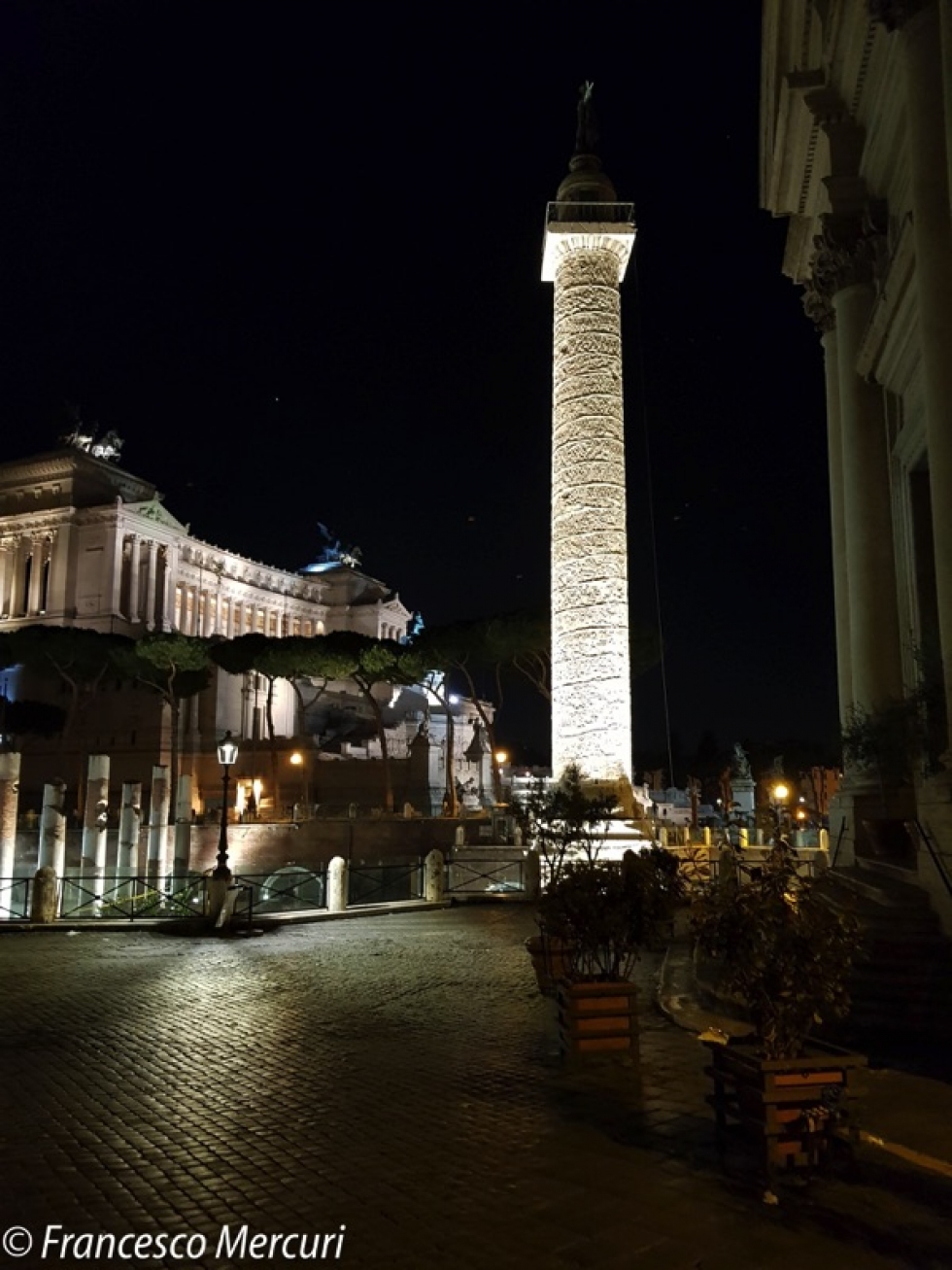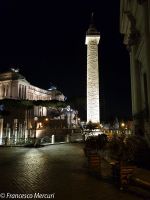The column is almost 40 metres tall (39.83). It is composed of a pedestal, a shaft of 29.77 metres (100 Roman feet, which was the standard height of columns) and a capital where originally stood the Emperor’s statue. Trajan’s bronze statue is not there anymore. In its place we can see a figure of Saint Peter put there from will of Pope Sixtus V in 1587. The main characteristic of the column is in the shaft. It is made of 17 pario marble drums - a precious kind of white marble - one on top of the other each weighing almost 40 tons, with a diameter of about 4 metres (3.85 metres at the bottom and 3.20 at the top). There’s a frieze that winds around the shaft 23 times from the bottom to the top describing the main phases of the two military campaigns Trajan led in Dacia in 101-103 A.D. and 105-106 A.D.. Dacia was a particularly belligerent region; its conquest was paramount not only because it allowed the Romans to protect the Eastern borders of the Empire but also because they had control over the Black Sea, an area rich of gold mines and coal seams. The frieze is made of 155 scenes, showing a total of almost 2,500 figures that can be considered “frames” of a film and minutely describe the story of these wars. The figures of the “frames”, carved in bas relief, get bigger as they get to the top of the column. This architectural trick was meant to let an observer from below have the feeling that the figures all are the same size, so the more you go up the bigger is the size of the figures. The column was originally coloured as any other Roman monument. The colours, lost over the centuries, must have had the aim of making the bas reliefs more visible and beautiful than they are now. We got used to seeing Roman monuments in travertine or marble, “naked” and white, but we fail to remember that Romans lived in a colourful world! We do not know for certain the author of the column; it is assumed to have been Apollodorus of Damascus, Trajan’s favourite architect who had already designed the whole Trajan’s Forum where the column lies. A clarification on the architecture: as most Roman columns, this is a coclide column (from the Latin “cochlis-idis” “small snail) meaning a column that has a spiral staircase getting to the top. 185 steps get the light from 43 slits in the shaft. The word coclide also started to indicate columns having a frieze on the outside that reached the top in a spiral. The Trajan’s column frieze is longer than 200 metres. The pedestal appears as a big marble cube, which walls are decorated with bas reliefs describing weapons and armours taken from the enemies. On one of its sides there’s a door that leads to the flight of the spiral stair and to three rooms that are empty today. The bigger one is supposed to have hosted the urn containing the ashes of the Emperor and his wife, Plotina. Not everybody knows that the column apart from exalting Trajan’s endeavours was also a tomb. An interesting fact: next to the pedestal a small chapel dedicated to Saint Niccolò was built around 1000. Before having it demolished in the first part of 1500, the chapel was inhabited in 1300 by a hermit who, for many years rang, thanks to a long rope, a bell on the top of the column. In the Middle Age this extraordinary monument was a bell tower as well!
Giuseppe Rosselli











